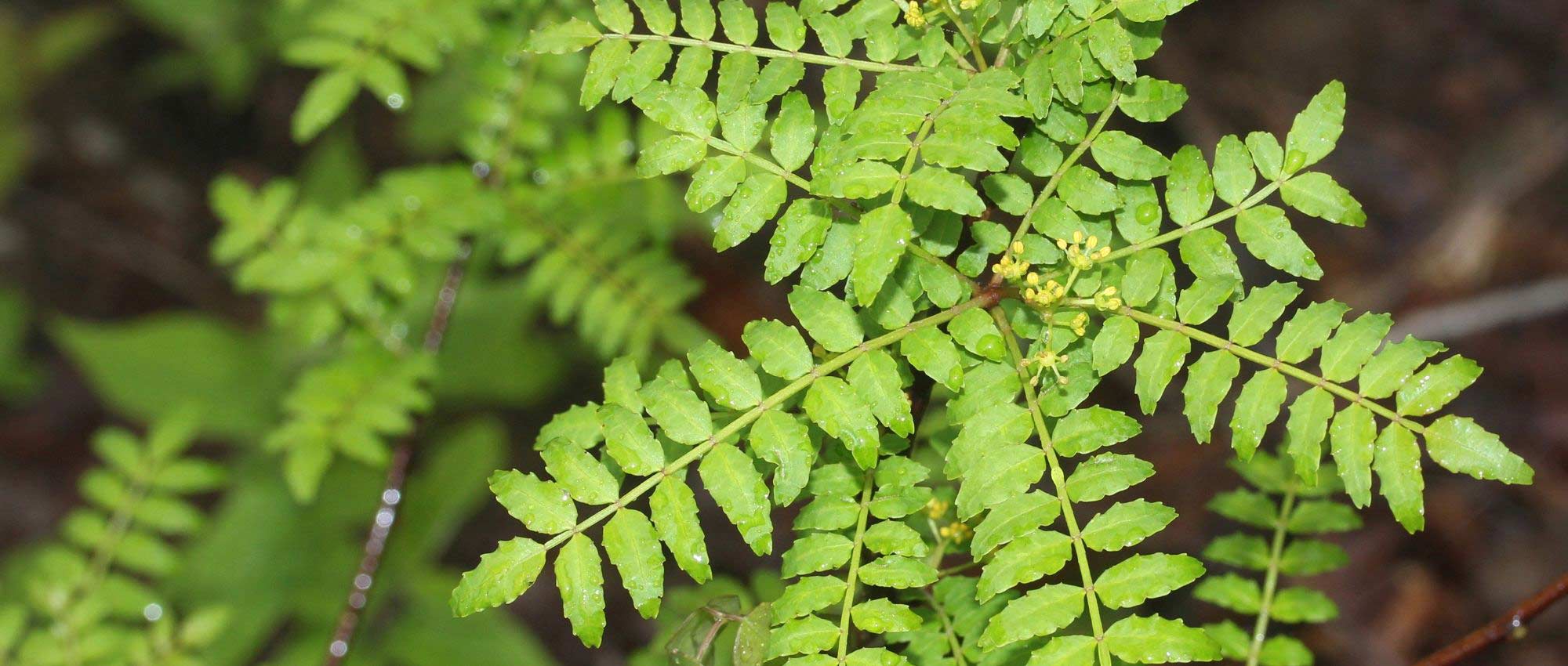
Sichuan pepper, Zanthoxylum: planting, growing and harvest
Contents
Zanthoxylum in a nutshell
- Zanthoxylum is a bush prized for its aromatic, spicy berries
- It has fine, delicate, divided foliage that turns yellow or purple in autumn
- Some varieties have dark, purple foliage
- In late summer to early autumn, its berries can be harvested for use in cooking!
- Its thorns make it ideal for forming a defensive hedge
- Very hardy, it tolerates down to -15 °C
A word from our expert
Zanthoxylum or Sichuan pepper is a bush prized for both ornamental qualities and culinary interest! It has superb foliage divided into narrow leaflets, and produces berries with a spicy, peppery taste. Foliage is also aromatic… no surprise for this bush closely related to citrus trees! There are varieties with rather dark purple leaves, such as variety ‘Black Magic’. In autumn, Zanthoxylum leaves turn beautiful yellow or purple hues, then fall. Young leaves reappear in spring as temperatures warm. By contrast, Zanthoxylum’s spring flowering is fairly inconspicuous. It is especially the species Zanthoxylum piperitum that is grown for its berries, which are harvested in early autumn. They have a peppery taste. Branches and leaves are thorny.
Zanthoxylum is an easy-to-grow, undemanding bush. It is quite hardy, tolerating down to −15 °C. In the garden, it thrives in full sun or partial shade, in fertile, light, cool, well-drained soil. It is even possible to grow it as a bonsai! In the garden, it is ideal for forming a defensive hedge, together with other thorny bushes.
Botany
Botanical data
- Latin name Zanthoxylum sp.
- Family Rutaceae
- Common name Sichuan pepper, Clavalier
- Flowering spring, in May–June
- Height up to 3–4 m
- Exposure full sun or partial shade
- Soil type rich, fresh, free-draining
- Hardiness down to -15 to -20 °C
Zanthoxylum include nearly 200 species of trees and bushes, which may be deciduous or evergreen, and are generally spiny. In cultivation the most common is Zanthoxylum piperitum, as well as Z. simulans and Z. armatum. These species mainly come from Asia (China, Japan, Korea, Taiwan, Nepal), which gives Zanthoxylum its common name of “Sichuan pepper” (province in south-west China). However, other species grow in North and South America, Africa and Australia. Zanthoxylum is mainly encountered in understory, in forests of warm or tropical regions. That does not prevent it being a hardy bush, tolerating down to −15 °C, even −20 °C. It is prized and cultivated for its spicy berries, but almost all parts of the plant (leaves, flowers, bark…) are aromatic and can be used.
Despite its nickname of Sichuan pepper, Zanthoxylum does not belong to the pepper family (Piperaceae), but to the Rutaceae family, just like citrus trees! It is rue (Ruta graveolens) that gave the family its name. Rutaceae are very aromatic and fragrant plants. The family also includes other ornamental species such as Choisya or Skimmia. Some plants in this family are strongly spiny, like Zanthoxylum but also Poncirus trifoliata.
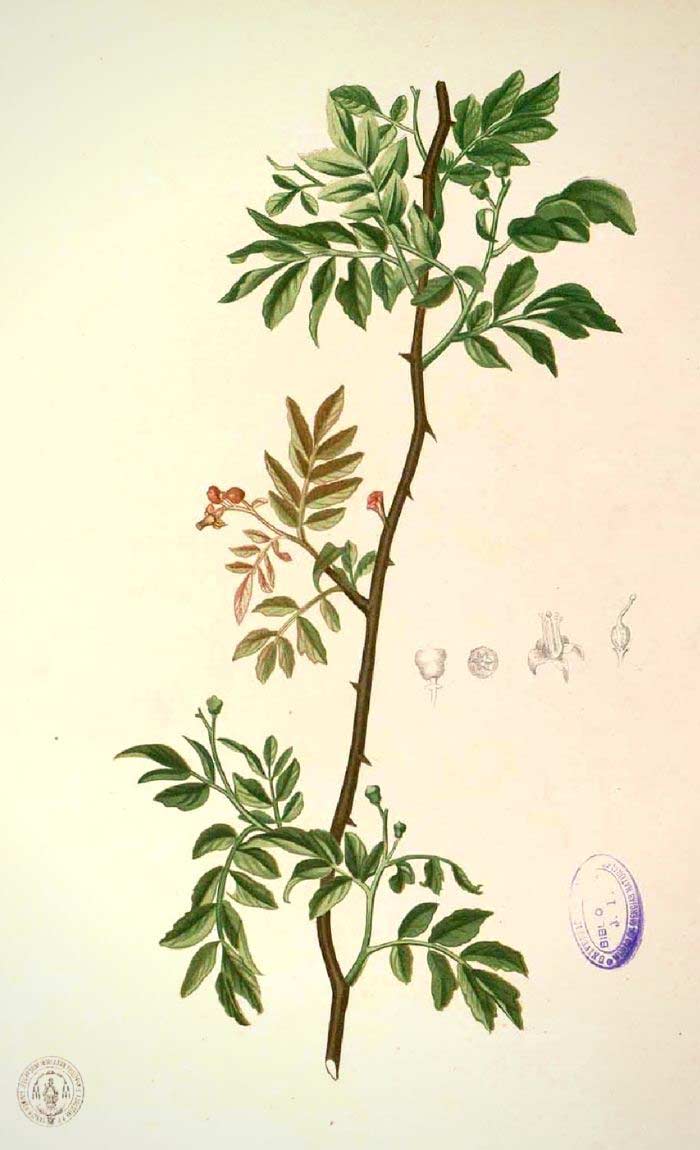
Zanthoxylum piperitum: Botanical illustration
Etymologically, the name Zanthoxylum comes from the Greek xanthos: yellow, and xylon: wood, and refers to a yellow dye obtained from the roots of some species. In French Zanthoxylum is also called Poivrier du Sichuan, Clavalier, Sansho pepper, or Timut pepper. Its name is sometimes spelled Xanthoxylum.
Zanthoxylum is a fast-growing bush, reaching up to 3–4 metres in height at most, and up to 2 m in spread. It has spiny shoots. Over time these spines do not fall off but instead broaden, eventually forming large protuberances on the trunk. This makes Zanthoxylum even more unique and striking!
The fine, elegant foliage of Zanthoxylum is appreciated. Leaves are alternate (inserted one after the other on the branches) and measure up to 15–20 cm long. They are divided into ovate leaflets, narrow and elongated, with a dentate margin. They are odd-pinnate (with an odd number of leaflets), the leaf bearing a terminal leaflet. Thus they resemble ash foliage, which explains why Zanthoxylum simulans is sometimes called “Clavalier with ash-like leaves”. In Z. piperitum they may bear up to 23 leaflets, while numbers are lower in Z. simulans (up to 11 leaflets). Shoots and leaves bear fine, dark, sharp spines. Zanthoxylum leaves are also fragrant, releasing a citrusy, spicy scent when crushed.

Spines of Zanthoxylum simulans and Z. piperitum; trunks and branches of Z. simulans covered with old spines that have widened and lignified. (photos: Plant Image Library / Alpsdake / Dysmorodrepanis / T.Voekler)
Leaves are generally dark green and glossy. However, there are some purple-leaved varieties, such as Zanthoxylum piperitum ‘Black Magic’ or ‘Purple Leaf’.
Zanthoxylum piperitum and Z. simulans are deciduous. In autumn their foliage turns beautiful golden-yellow, sometimes purplish, before falling.
Zanthoxylum flowers in spring, usually in May–June. It then bears small flowers of a pale yellow–green colour. They are very inconspicuous, measuring only 4–5 mm in diameter. They have five sepals but no petals, and male flowers carry five stamens. These flowers are gathered in clusters no larger than 5 cm in diameter. They appear on last year’s branches.
In general, Zanthoxylum are dioecious (an individual is either male or female), which means at least two plants are needed to obtain seeds. However, some species and varieties found in cultivation are monoecious (a single plant produces both male and female flowers). In any case, to enjoy good fruiting it is preferable to plant at least two plants in the garden to allow cross-pollination.
From late summer or early autumn, small rounded pink‑red berries appear on Zanthoxylum, following the female flowers. They measure 4–5 mm in diameter and are gathered in clusters. These berries have a surprising piquant, peppery taste, which is why they are nicknamed “Sichuan pepper”. It is mainly the berries of Zanthoxylum piperitum that are used.
Berries are ripe when they split in two to reveal the black seed they contain. The seed itself is not eaten but only its red husk, which is very aromatic. Besides their spicy taste, the berries are also decorative!
Sichuan pepper traditionally forms part of the “five‑spice” mix, together with star anise, clove, fennel seeds and cinnamon.
Be careful not to confuse it with pink pepper, also called “pink berries”, which comes from the tree Schinus terebinthus, native to Brazil.

Berries of Zanthoxylum, or Sichuan pepper. Only the pink husk is consumed, not the black seed it contains. (photos: Kristine Paulus / Alpsdake)
Main varieties of Zanthoxylum
Most popular varieties
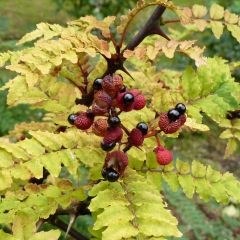
Zanthoxylum piperitum
- Flowering time June, July
- Height at maturity 4 m
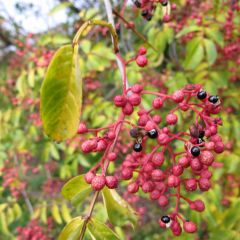
Zanthoxylum simulans
- Flowering time June, July
- Height at maturity 4 m
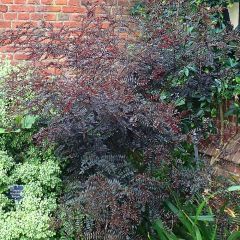
Zanthoxylum piperitum Black Magic
- Flowering time June, July
- Height at maturity 3 m
Discover other Zanthoxylum - Prickly Ash
View all →Available in 1 sizes
Available in 1 sizes
Available in 2 sizes
Available in 1 sizes
Available in 1 sizes
Available in 1 sizes
Available in 1 sizes
Available in 1 sizes
Planting Zanthoxylum
Where to plant?
You can plant Zanthoxylum in full sun or in light shade. Just avoid dense shade, as it needs good light. Preferably position it sheltered from cold winds.
Soil should be fertile, fresh and free-draining. It likes loose, light soils. Do not hesitate to add well-rotted compost when planting, to enrich soil and improve its structure. Generally, Zanthoxylum is not a demanding bush and does well in most soils. However, better avoid very calcareous soils.
As Zanthoxylum’s branches are thorny, avoid placing it near a path or thoroughfare. You can, however, plant it as a defensive hedge, with other thorny bushes such as Berberis, Forsythia, Mahonia aquifolium…
When to plant?
You can plant Zanthoxylum in spring (April–May) or in autumn (October), avoiding frosts. Prefer autumn planting in mild-climate regions and spring planting in cooler regions.
How to plant?
- Dig a large planting hole, two to three times the size of the rootball.
- Add well-rotted compost to enrich soil.
- Remove the bush from its pot and tease the edges of the rootball to loosen the roots a little.
- Plant Zanthoxylum. Collar should be at soil level.
- Backfill soil around plant
- Water generously.
Keep watering in the weeks following planting. You can lay a mulch layer around the bush. For example, use ramial chipped wood (RCW) or dead leaves, a few centimetres thick.
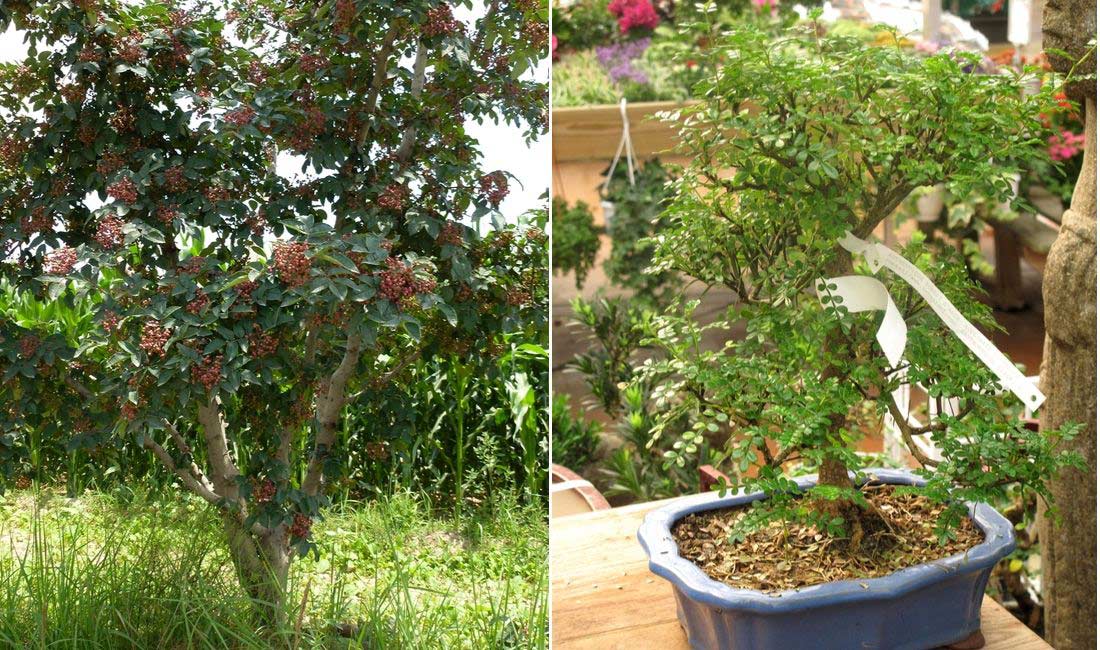
You can plant Zanthoxylum in open ground in garden, grow it in a pot, and even train it as bonsai!
Care
Zanthoxylum is a fairly easy plant to grow and maintain. It requires little attention. Water regularly during first year. Once established, Zanthoxylum becomes relatively drought-tolerant.
Beware of spring frosts, which can damage young shoots and harm flowering, thus reducing berry production.
For good fruiting, it is best to add each year, at the base of the bush, a little well-rotted compost. You can work it superficially into the soil by light hoeing.
Zanthoxylum tolerates pruning well, and, although not essential, pruning helps open up the canopy and facilitate harvest by spacing branches. Moreover, because it has a bushy habit and its thorny branches can sometimes be a nuisance, pruning Zanthoxylum helps limit its spread.
Zanthoxylum can also be grown asbonsai! In that case, carry out regular repotting every two to three years, prune regularly in winter and perform a few pinches during the year. You can grow it in a substrate made from Akadama red clay.
Harvest and use
Zanthoxylum berries are harvested from early autumn, around October. When fruits are ripe, they split open to reveal the black seed inside. Be careful as Zanthoxylum is a thorny bush: when harvesting berries, protect yourself with gloves and covering clothing.
Cut small clusters of berries and harvest them by placing a sheet or basin underneath, onto which you can let them fall. Dry them for one to two days by spreading them out in a warm, dry place out of direct sunlight. In cooking, only the red husk that covers the seed is used. They must therefore be separated, by hand or using, for example, a sieve. Then store these fragments of red husk in a jar or a pepper mill. You can then grind them when ready to use. Use them as a spice to flavour your dishes! When separating husk and seed, you can keep the seed to propagate Zanthoxylum by sowing.
Zanthoxylum can be used alone or combined with other spices to make, for example, a five-spice blend, with star anise, fennel seed, clove and cinnamon.
Young leaves of Zanthoxylum can also be used in cooking, dried and crushed, as they are aromatic and very fragrant.
Gwenaëlle explains How to harvest, store and use pink peppercorns in cooking?
Multiplication
Best method to propagate Zanthoxylum is sowing. It is also possible to propagate by cutting (cuttings of semi-woody stems in July–August, or root cuttings).
Sowing
You can either sow seeds in autumn, as soon as they are ripe, then expose your sowing to cold, or do it in early spring after storing them for about three months in the fridge. These seeds need a period of cold to germinate (cold stratification).
- Prepare a pot with a well-draining substrate, for example a mix of potting compost and sand.
- Sow seeds on the surface.
- Cover with a thin layer of substrate (between 0.5 and 1 cm thick)
- Water with a fine spray
- Place the pot in a bright position, out of direct sunlight.
Then, be patient! Zanthoxylum seeds generally take several months to germinate, sometimes up to a year. Continue to water the substrate regularly so it remains slightly moist until germination. As soon as young seedlings are large enough to handle, pot on into individual pots. In the first year, keep young plants under cover for winter to protect them from cold. Plant out the following spring as soon as temperatures are milder.
Zanthoxylum begins to flower and fruit after 3 to 4 years.
Association
Zanthoxylum is ideal for creating a deterrent hedge. You can plant it alongside other spiny bushes: Berberis, Pyracantha, Poncirus trifoliata, Osmanthus heterophyllus, Prunus spinosa… To add a splash of colour, discover superb pink flowering of hawthorn Crataegus laevigata ‘Paul’s Scarlet’! Include Mahonia aquifolium, which has leathery, spiny leaves and offers lovely yellow flowering in winter. Some shrub roses can also find a place in this type of hedge, gracing it with their superb scented flowering. Also consider Japanese quince (Chaenomeles), a spiny bush that will delight with its generous flowering from late winter.
Of course, Zanthoxylum can also be planted with non-spiny bushes to create a beautiful country-style hedge: Viburnums, Cotinus, Rowans, Hornbeam, Dogwoods…
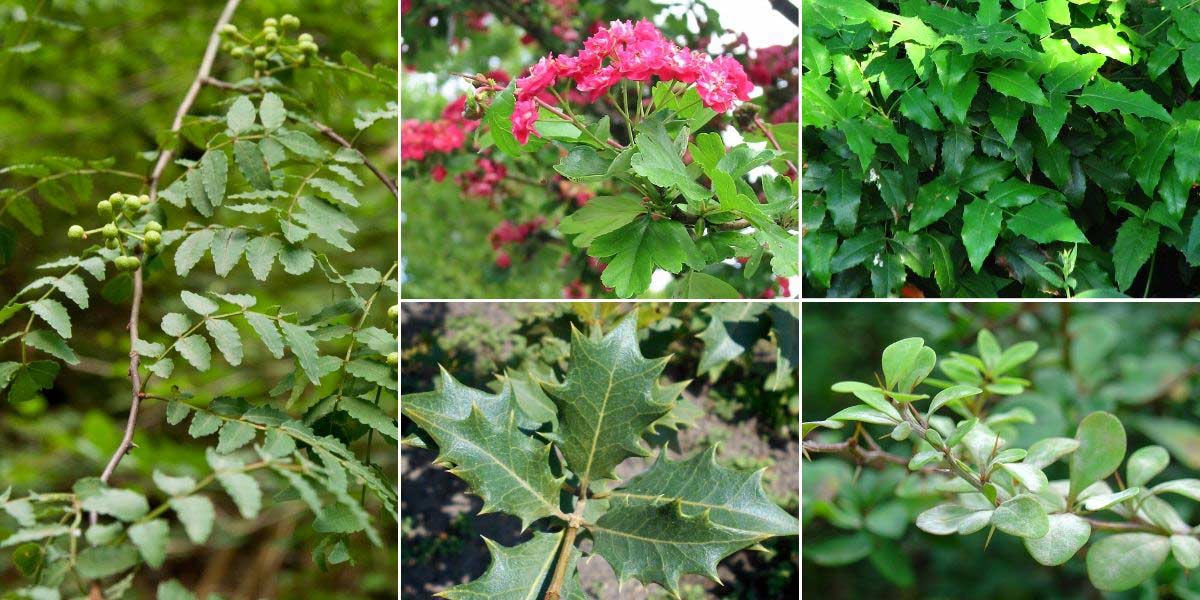
You can use Zanthoxylum to create a deterrent hedge. Zanthoxylum piperitum, Crataegus laevigata ‘Paul’s Scarlet’ (photo Sabencia Guillermo César Ruiz), Mahonia aquifolium (photo Kor!An), Osmanthus heterophyllus (photo Salicyna) and Berberis thunbergii
To create striking contrast effects in garden, you can plant Zanthoxylum piperitum ‘Black Magic’, purple-leaved, beside plants with light green, even golden or variegated foliage: Cornus alba ‘Ivory Halo’, Lonicera nitida ‘Baggesen’s Gold’ (shrubby honeysuckle), Hakonechloa macra ‘Aureola’, Physocarpus opulifolius ‘Angel Gold’… You can also include other dark-leaved plants, such as Cotinus ‘Royal Purple’ or elder ‘Black Lace’. Also enjoy whole diversity of leaf colours offered by Japanese maples!
It is also interesting to plant Zanthoxylum alongside other exotic and hardy trees and bushes that produce unusual fruits! Enjoy for example Feijoa, Lonicera caerulea or pawpaw. For more ideas and information, discover Ingrid’s article on our blog: “7 exotic and hardy fruit trees to grow in garden”
Also feel free to plant Zanthoxylum on its own, for example in middle of a short grass meadow, to showcase its architecture and distinctive trunk! In any case, we recommend planting it away from walkways.
Did you know?
Medicinal properties
Zanthoxylum berries have many benefits. They have anti-inflammatory, antimicrobial and stimulant properties, and help digestion. They are also effective against toothache and joint pain.
Zanthoxylum essential oil, with soothing and antimicrobial properties, is effective against dental pain, stress and nervous tension.
Berries are not the only part worth eating: flowers, young leaves and bark of Zanthoxylum piperitum are edible and also have a spicy flavour.
Useful resources
- Our range of Zanthoxylum
- An article by Ingrid on our blog: “7 exotic and hardy fruit trees to grow in the garden”
- Subscribe!
- Contents
. Sichuan Pepper: Cultivation](https://en.promessedefleurs.eu/blogwp/wp-content/uploads/2019/10/poivrier-zanthoxilum-tout-savoir.jpg)


































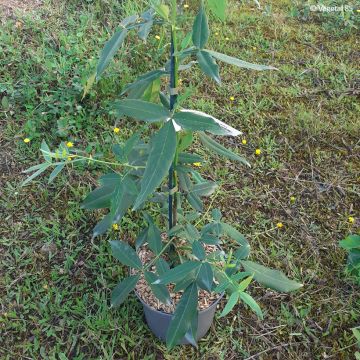

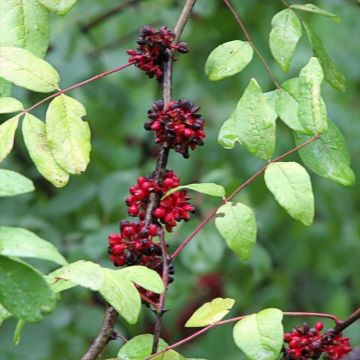
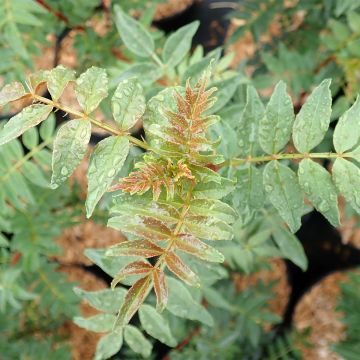
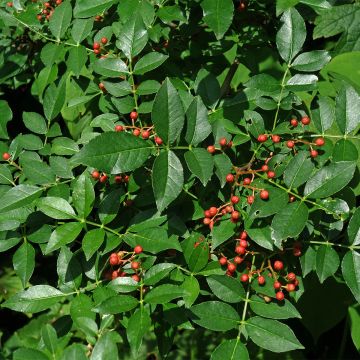
Comments